The 7 Pillars of Successful Facebook Marketing
by Ana Gotter • September 28, 2019
When you think of social media marketing, the first thing that likely pops into your head is Facebook marketing.
Facebook was the platform that really revolutionized social media marketing as we know it, and it’s still the platform that encompasses so much of what we expect social media to be (privacy issues aside, of course).
People are discovering brands and connecting with friends, but they’re also creating events, networking in close-knit groups, and chatting on Messenger instead of text. For those who use it frequently, it’s almost like a necessary part of life instead of some random app they think is fun.
Facebook marketing, therefore, can be valuable for brands and organizations of all shapes and sizes. It gives you the chance to find your audience, no matter where they are in the world, and nurture relationships with them. The platform also boasts an enormous number of features, ranging from private groups to event listings that you can use to engage with your followers in meaningful ways, even with organic reach still on the decline.
Are you ready to start Facebook marketing or step up your game to start getting real results? In this post, we’re going to take you through the 7 pillars of successful organic Facebook marketing, show you how to optimize your Page and everything on it, and general best practices to help you best connect with your target audience.
Why You Need Facebook Marketing
At least once every six months or so, Facebook inevitably rolls out an update that causes someone, somewhere, to declare that Facebook marketing is officially dead. Some even like to get a little dramatic about, insisting that we’re approaching the End of Days for the Facebook Apocalypse.
None of this has ever been true, and it certainly won’t be anytime soon, even if changes are made that do hinder abilities we currently have. There’s no denying that organic reach has been steadily declining for nearly a decade, but free, organic Facebook marketing can still be wildly valuable (and at a low cost, meaning exceptional ROI).
Even with organic reach declining (the average reach as of right now is 6.4% of your total Page likes), the platform is still essential for all brands and organizations, whether you’re running a nonprofit, an ecommerce business, offer B2B services, or anything in between.
Here’s why:
- Facebook still has the largest user database out of all social platforms, with 2.32 billion monthly users as of the end of 2018
- 74% of users access the app or desktop site at least once daily, spending an average of 35 minutes per day on the platform
- 78% of Americans have discovered retail products to purchase on Facebook
Users are also actively using Facebook to find new events to attend, ask their friends for recommendations, and discover brands. You want to be part of all of this.
The 7 Pillars of Successful Facebook Marketing
Facebook marketing has a lot of features and a lot to keep up with, which can make it feel overwhelming at times.
The key here is breaking this platform down into 7 distinct pillars that are each needed for success. We’ll look at each one individually, which will take you through the process of setting up a successful Facebook marketing strategy.
1. Having a Strong Page
Your Page is everything on Facebook. It’s where you can add key information about your business, collect reviews and UGC, and share updates to engage your followers.
Pages should be well-organized and fully fleshed out, giving users all the key information they need to know whether or not they want to learn more about what you do.
Here’s what you need to do to create a strong, well-organized Page that will work in your favor:
- Have your About section filled out completely. Plug in your address, explain what your business does (throwing in a few keywords for search visibility), list operational hours, and more.
- Upload a high-resolution profile and cover photo. Using your brand logo as the profile photo is typically a good choice, and opting for a cover photo that shows what your brand is about should be a priority. This can show your product being used, your employees in front of your office, or even a relatively generic image or graphics that can generate the feeling you’re going for.
- Add relevant tabs to your Page. This can be done under your Page settings. Add in tabs like Reviews, Shopping, and more. These add new functionalities to your Page that allow users to interact with you in unique ways. Adding a Shop tab, for example, allows you to set up a store to sell your products directly on Facebook.
- Choose a pinned post. Facebook Pages allow admins to “pin” the post of their choice. This positions the post at the top of the Page, ensuring it’s one of the first things users see when browsing your Page, giving you control over their first impression.
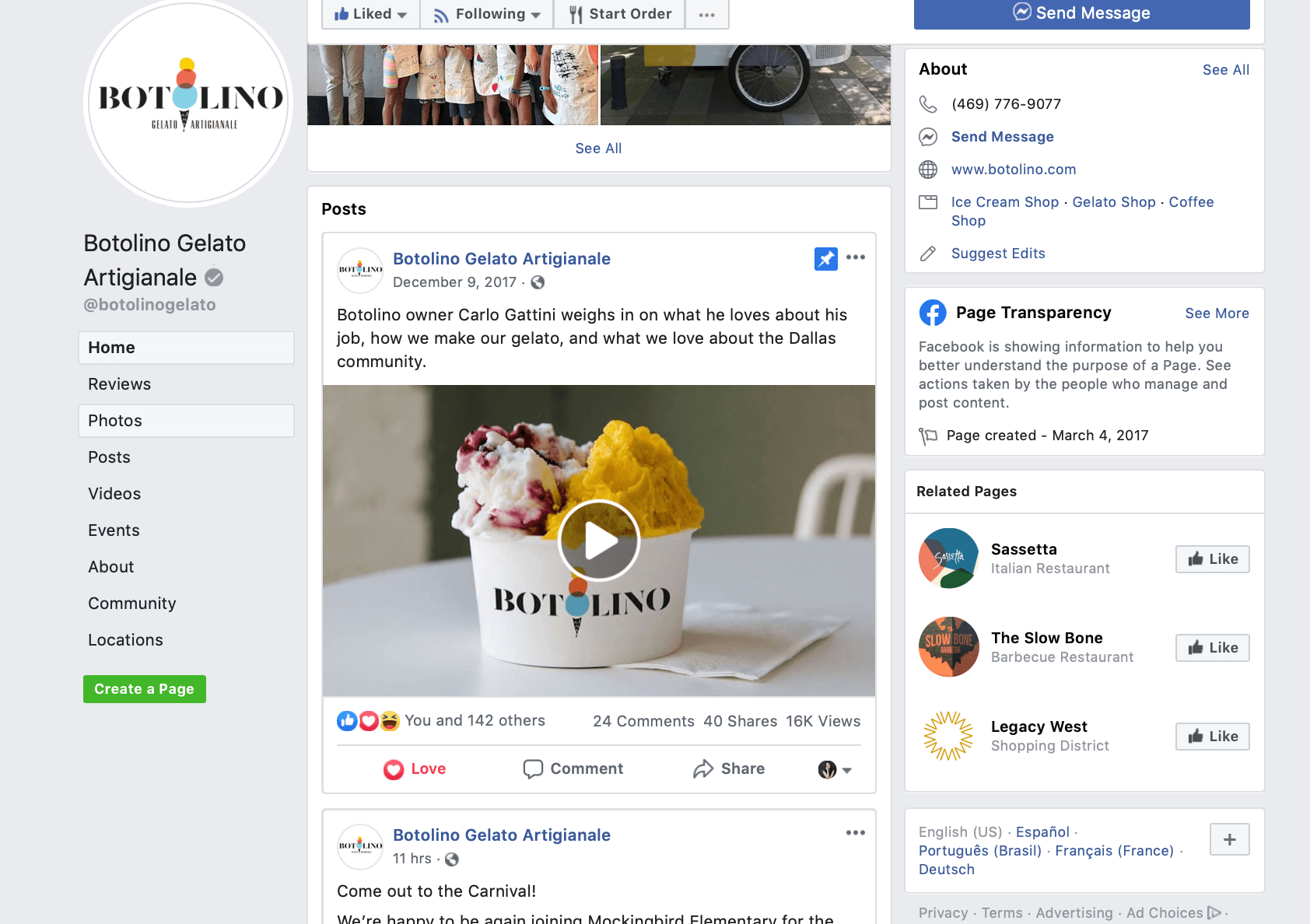
2. Creating a Strategic, Diverse Calendar of Posts
Once your Page is up and running, it’s time to start creating your content calendar and putting together your content strategy.
Your content strategy is essentially going to determine what goals you want to accomplish with Facebook marketing, the types of content you want to use to accomplish those goals, and how you want to use it.
If you want to build trust and increase engagement, for example, you’ll want to make encouraging and sharing UGC a key part of your strategy. You may also realize that sharing behind-the-scenes and how-it’s-made content helps your audience trust your business more, so you’ll want to include those posts regularly on the schedule.
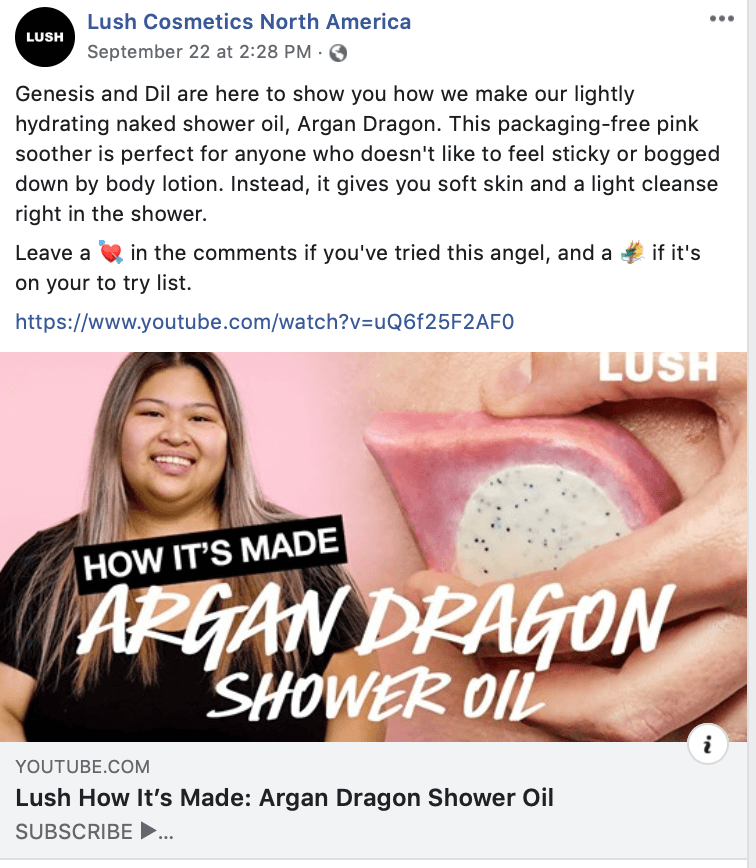
For best results, I strongly recommend finding a social media scheduling tool. Facebook’s Creator’s Studio allows you to schedule posts in advance, which is a great option, but I personally am partial to third-party scheduling tools like Sprout Social, Agorapulse (pictured below), and Hootsuite.
These tools will let you schedule content for other platforms, too, and I love the ability to be able to see a full content and create queues of evergreen content to fill in any gaps on the schedule.
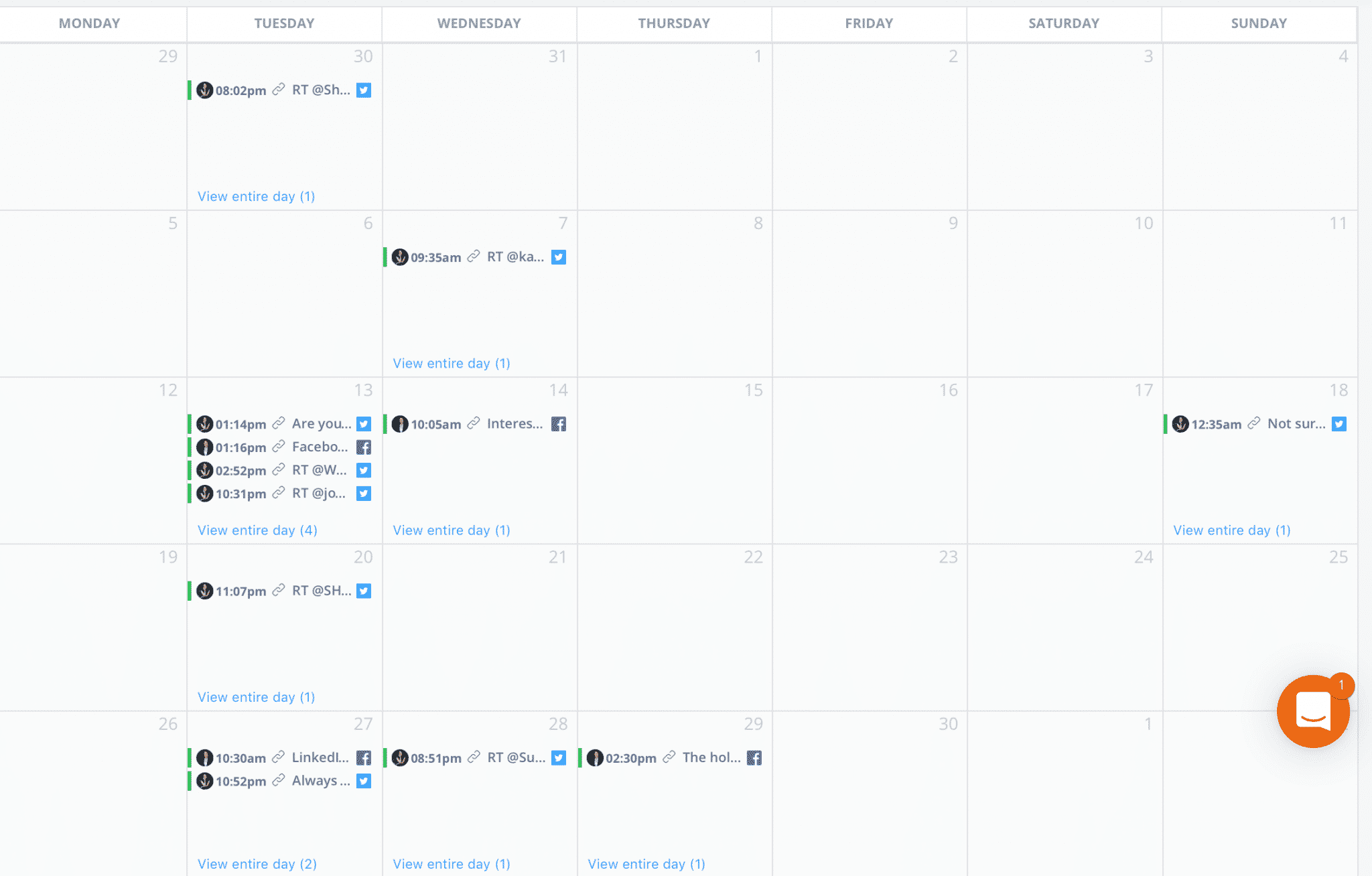
Seeing it all laid out helps you ensure that you’re using a diverse mix of content, which will keep your audience engaged, your engagement rate up, and your reach up, too.
3. Using Multiple Types of Media
As you’re creating content, be mindful to incorporate different types of media into the mix. Text-based posts, for example, should be a very, very small portion of your overall content, because posts with some sort of visual component see significantly more engagement and a 65% increase in message recall up to 10 days later.
Images, video, and live video (which is similar but different) should be attached to the majority of your posts. Even if the image you’re sharing is simply a generic stock photo with a quote attached, that will still help you get more attention and boost engagement.
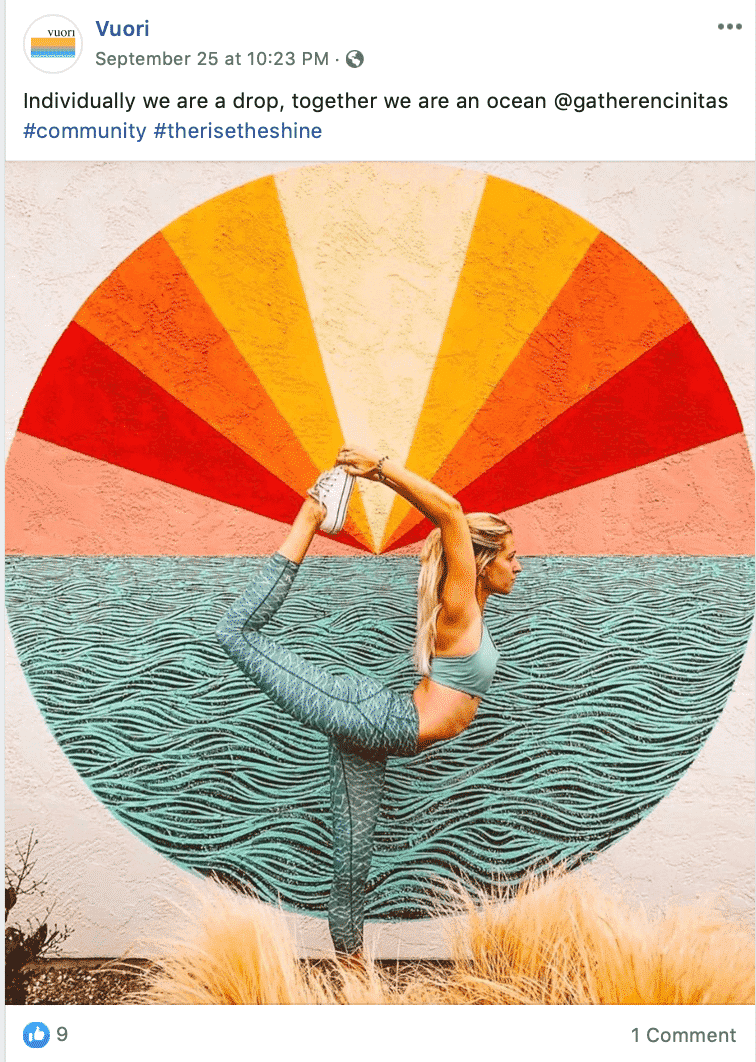
Switch it up and incorporate different types of images and videos into the mix. This goes with pillar #2; the more types of content you have, the more your audience will keep checking in.
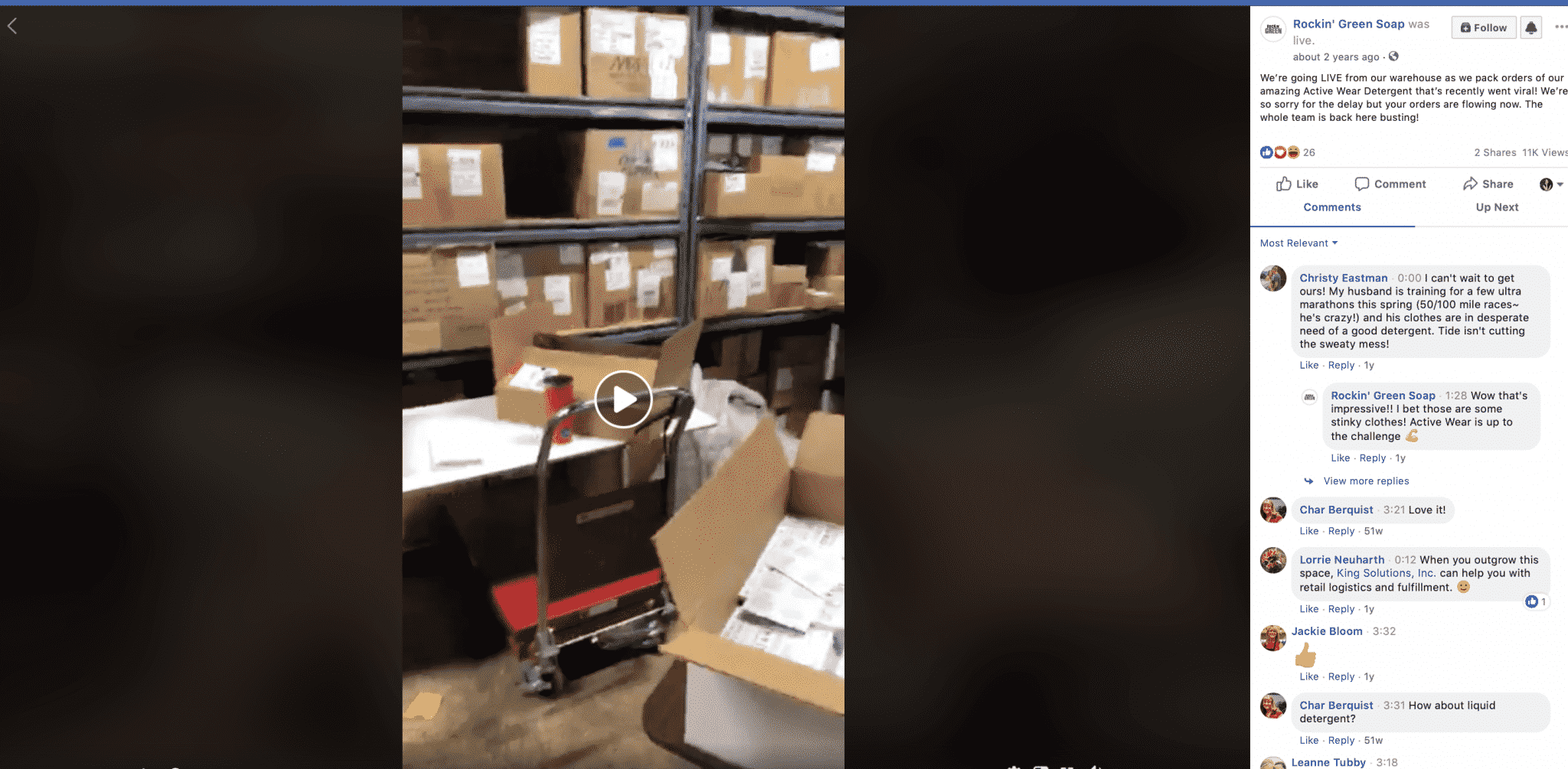
No one wants to see the exact same thing day after day. Use a mix of behind-the-scenes content, informational videos with quick tips, short tutorials, and product images.
4. Creating More Stories
Facebook Stories started off as a Snapchat-copycat feature on Instagram, and I didn’t take it seriously. Then it spiraled into one of the most-used social media features we’ve got, and Facebook added it to their roster, too.
There are more than 500 million daily Story users, so it’s a feature you need to be using, especially since you don’t have to worry about declining organic reach here. Once your Story is published, it will show up in your followers’ queues.
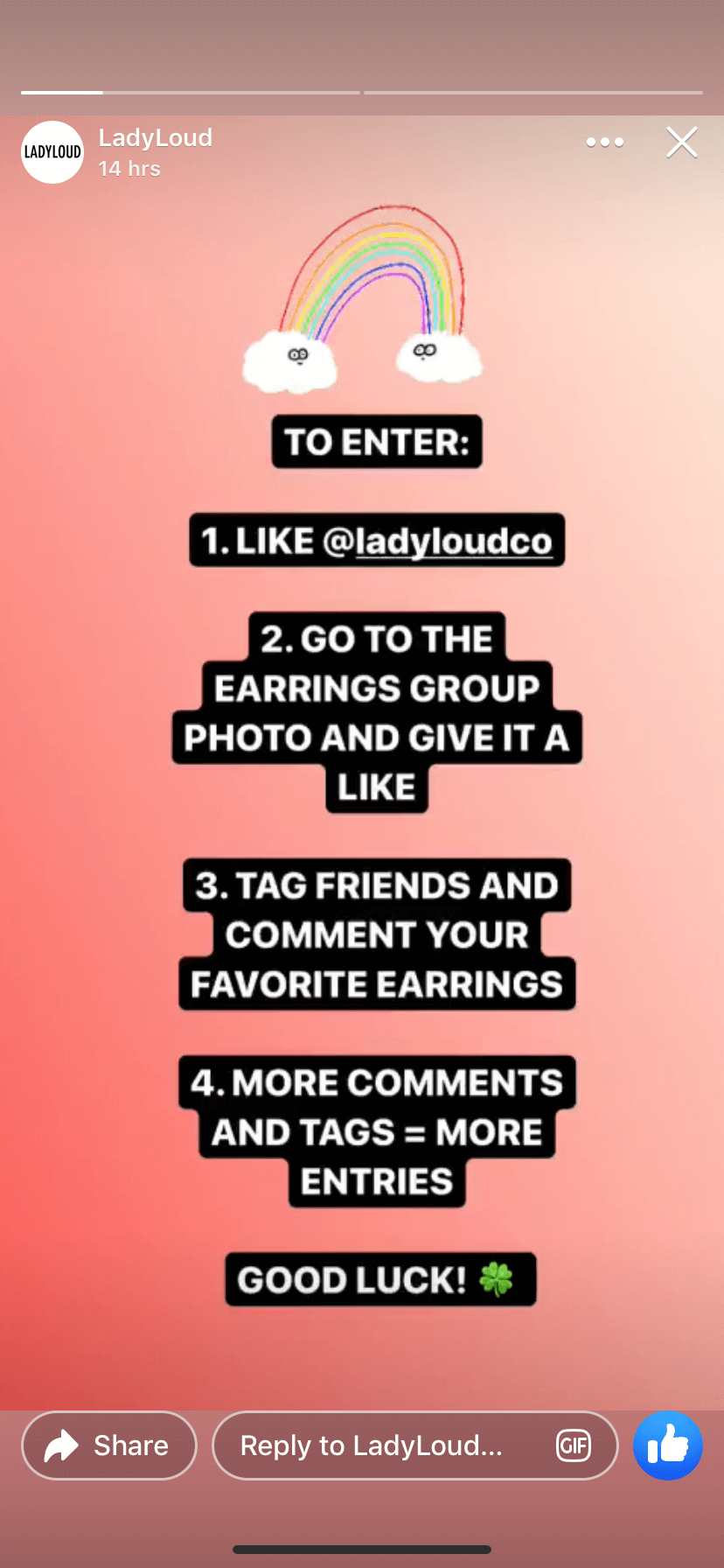
When creating Stories, remember that their full-screen vertical format. You can use both images or videos under fifteen seconds long, and once again it’s best to mix it up.
Use stickers to keep your audience engaged and make the Stories more dynamic, and remember that this is a fun feature—Stories are meant to be a little quirky. When in doubt, you can always use them to funnel more views to your Page or big posts, like those detailing new products, Lives, or events.
5. Focusing On Generating Discussion
As you’re creating content, you’ll want to stay on top of all engagement coming for two reasons:
- You want to encourage more discussion.
- You need to engage in said discussions once they’re created.
Actual discussions and real interactions are key to building relationships with your audiences, and as a nice bonus, it gives you a chance to answer questions on products or services that may be holding them back from purchasing.
Encourage users to leave reviews on the platform, and then thank them publicly once they do. Ask questions in your posts designed to start discussions, asking what your followers think or if they have any questions. Respond to all comments whenever possible.
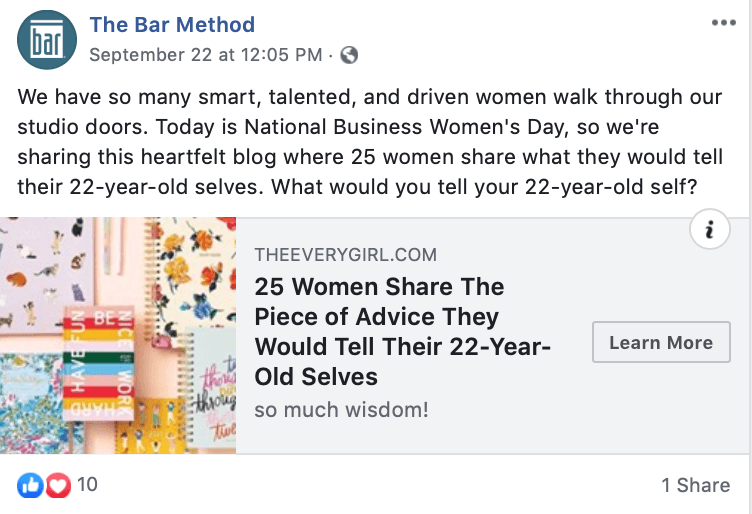
You’ll also want to make sure that you’re responding fast when people message you privately on Messenger. It’s almost a requirement that you respond within twenty-four hours, but ideally, you’ll be able to respond to most messages within a few hours.
Using those social media scheduling and management tools discussed above can help here—they’ll alert you to messages across multiple platforms, consolidating some of the chaos for you.
6. Incorporating On-Platform Features Into the Mix
As you get your Facebook marketing up and running, you’ll want to start to branch out and make full use of different features the platform offers. Here are a few key ones that you should consider using:
- Facebook Live. Facebook Live broadcasts see 6x as much engagement and 38% more views than uploaded native video content, so you need to have this in your content mix. These Lives can be short, but make sure that you’re always interacting with your audience to make them as dynamic as possible.
- Events. Facebook events are a great way to highlight any event your business is hosting, including everything from free online webinars to in-store taste testings. Create the event on Facebook, add a description, and invite all of your followers. As a bonus, when someone selects “Going” or “Interested,” their friends list can see this, too, expanding your reach for free.
- Offers. Facebook offers are essentially on-platform coupon codes. You get to set the rules here. If you only want 15 users to be able to claim the coupon, you can do that. If you want to have unique coupon codes generated for each person who claims the offer, you can do that, too. They can help you sell more, and they’re particularly powerful when trying to convert new users.
- Groups. Facebook groups are something all businesses should consider creating, whether you want to make them public or private. They have priority in the algorithm, meaning your reach will go much further, and they allow you to create a real community centered around your brand. You also get up close and personal with your customers in the best way, increasing brand loyalty.
7. Tracking Your Analytics
Last but not least, you must remember to consistently be watching your analytics. Facebook has incredible native analytics—called Facebook Insights—which can be found on your Page. This data will show you everything you need to know about the effectiveness of your current marketing, including your follower growth rates, your engagement rates, your video watch rates, and more.
Ultimately, you’ll want to see most of these numbers increasing, including follower count, but your engagement rate is going to be the thing you should focus on most. Engagement—which can include likes, clicks, shares, and comments—indicates relevance to your audience, and it plays an important part in how you rank in Facebook’s algorithm.
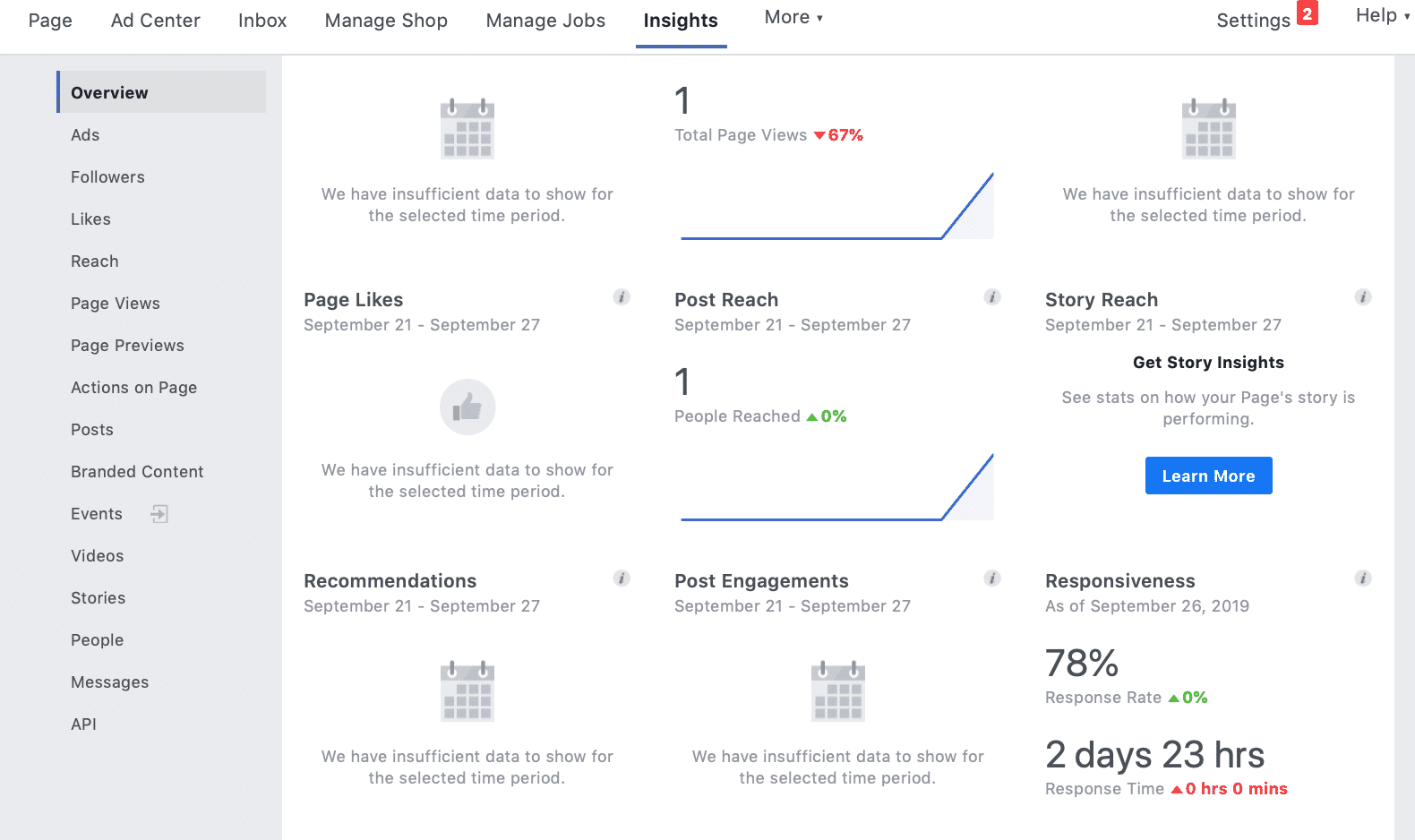
You should also watch what specific types of content perform best. Do your video tutorials get the most shares, but your ask-the-audience questions get the most engagement? Incorporate both into the mix a little more often, and weed out any content types that seem to hurt more than help you.
How to Amplify Your Facebook Marketing
Ready for things to get a little meta?
In order to really amplify the potential of your Facebook marketing, you almost need to market your marketing.
If this sounds confusing, don’t worry—it’s actually a pretty straightforward concept.
You want to promote your Facebook content in as many places as possible so that people will be funneled to your Page, follow you, and then hopefully receive more of your content on an ongoing basis.
The following strategies can help with this:
- Use cross-platform promotion. Send people to your Facebook from other social platforms. You can do this by hosting a contest, for example, where people need to enter in a contest on a landing page in one of your tabs. It forces people to visit your Page and hopefully follow it. Events and groups that are promoted on other platforms can work well for this purpose, too.
- Use Facebook Ads to give your content a boost. Facebook marketing lets you reach people organically, but sometimes, as we all know, that reach is limited. Facebook Ads can help you take your content and put it in front of more people, attracting more followers and hopefully more engagement. This is a paid strategy, but even a $15 campaign can help you attract new customers.
- Place social links on your site. Make sure that people who want to find you on social can do so easily. Have links to your social media profiles—Facebook first!—in the footer of your site.
Conclusion
Facebook marketing play a role in the marketing strategies of all businesses, brands, and organizations. With increasing numbers of users turning to Pages to find information on a brand, it’s a platform that you don’t want to pass up.
Taking time to set up and maintain your Page will take some work, but it will also be worthwhile both immediately and long-term as long as you’re remembering the 7 pillars of Facebook marketing and incorporating them into your campaigns.
Looking for help reaching your audience with Facebook, or want to start running Facebook Ads? We can help. Contact us here to learn more.
What do you think? Is Facebook marketing an important part of your marketing mix? How do find and engage new followers? Share your thoughts and questions in the comments below!




